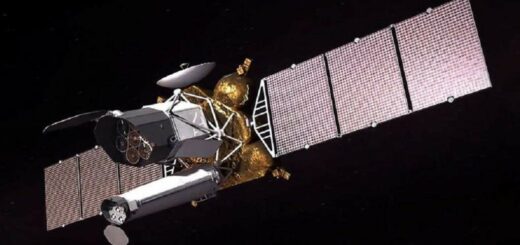National Current Affairs – UPSC/IAS Exams- 26th September 2019
Emission trading Scheme
Topic: Environment and Ecology
In News: The Gujarat government launched what is being described as the world’s first market for trading in particulate matter emissions. While trading mechanisms for pollution control do exist in many parts of the world, none of them is for particulate matter emissions.
More on the Topic:
- The ETS is a regulatory tool and it is launched in Surat. It is a market in which the traded commodity is particulate matter (PM) emissions.
- It is aimed at reducing the pollution load in an area and at the same time minimising the cost of compliance for the industry.
- The Gujarat Pollution Control Board (GPCB) sets a cap on the total emission load from all industries. Various industries can buy and sell the ability to emit PM, by trading permits (in kg) under this cap. For this reason, ETS is also called a cap-and-trade market.
About the Functioning of the scheme:
- At the beginning of every one-month compliance period (during which one emission permit is valid), 80% of the total cap of 280 tonnes for that period is distributed free to all participant units.
- The allocation of the permits is based on an industry’s emission sources (boilers, heaters, generators) as it determines the amount of PM emitted.
- GPCB will offer the remaining 20% of the permits during the first auction of the compliance period, at a floor price of Rs 5 per kg.
- Participating units may buy and sell permits among each other during the period.
- The price is not allowed to cross a ceiling of Rs.100/kg or fall below Rs.5/kg, both of which may be adjusted after a review.
Significance of the scheme:
- The reason for trading is that in a cap and trade market, the regulator will measure pollution over a period of time and industries must own enough permits to cover their total emissions.
- Factories who find it very expensive to reduce pollution, will seek to buy more permits. Those who can easily reduce pollution are encouraged to do so because then they have excess permits to sell.
- Eventually, after buying and selling by plants that find it cheap to cut pollution and those for whom it is expensive, most pollution is taken care of.
- Whatever the final allocation, the total number of permits does not change so the total pollution is still equal to the predefined cap. And yet the costs to industry are decreased.
Examples of other pollution control Trading Mechanisms:
- The CDM (carbon development mechanism) under the Kyoto Protocol allows trade in ‘carbon credits’.
- The European Union’s Emission Trading System is for greenhouse gas emission.
- India has a scheme run by the Bureau of Energy Efficiency that enables trading in energy units.
Source: Indian Express
Draft National Resource Efficiency Policy
Topic: Governance
In News: The Union environment ministry has drafted a National Resource Efficiency Policy, aiming to double the recycling rate of key materials to 50% in the next five years and enable upcycling of waste.
More on the Topic:
- The draft seeks to set up a National Resource Efficiency Authority (NREA) with a core working group housed in the Ministry of Environment, Forest and Climate Change and a members group with representations from different ministries, state/union territory, and other stakeholders.
- The authority would be supported by an Inter-Ministerial National Resource Efficiency Board to guide on the aspects critical to its implementation.
- It also plans to offer tax benefits on recycled materials, green loans to small and medium Enterprises (SMEs) and soft loans to construct waste disposal facilities, apart from setting up Material Recovery Facilities (MRF).
- Manufacturers and service providers would also be required to use more recycled or renewable materials and awareness would be created among consumers to indicate the shift.
- Idea of the national policy is to drive the country towards circular economy through efficient use of available material resources, based on principle of 6R and ‘green public procurement’.
- The 6R stands for reduce, reuse, recycle, redesign, re-manufacture and refurbish while the very premise of ‘green public procurement’ is to procure products with lower environmental footprints such as secondary raw materials and locally sourced materials.
- It also pitches for moving towards ‘zero landfill’ approach in the country, hinting at possibility of imposing ‘landfill taxes’ and ‘high tipping fees’ for bulk generators of waste so that they can move towards optimal use of materials and better waste management.
India Resource Statistics:
- India’s resource extraction of 1580 tonnes/acre is much higher than the world average of 450 tonnes/acre, while material productivity remains low.
- Water is fast becoming scarce while deteriorating air quality has emerged as a major threat to human life.
- There has been massive soil degradation, with 147 million hectares (Mha) of a total of 329 Mha land area hit.
- Import dependency is nearly 100% for the majority of the ‘most critical’ materials -cobalt, copper and lithium that find extensive application in high-end technology industry.
- Over 80% of crude oil that is processed in the economy is imported, alongwith 85% of its coking coal demand. Extraction of non-metallic minerals is crippled with challenges.
- To add to the problems, the country’s recycling rate is just about 20-25% compared with 70% in developing countries in Europe. The situation will only aggravate as India is likely to double its material consumption by 2030.
Model Mains Question: Comment on the Draft National Resource Efficiency Policy of India.
Source: PIB and Live mint
Exercise MALABAR
Topic: International Relations
In News: The naval forces of India, Japan and the United States are set to participate in the 23rd edition of trilateral maritime exercise Malabar.
More on the Topic:
- Malabar 2019 would endeavour to further strengthen India-Japan-US naval cooperation and enhance interoperability, based on shared values and principles.
- The exercise would involve complex maritime operations in the surface, sub-surface and air domains and focus on anti-submarine warfare, anti-air and anti-surface firings, etc.
Source: PIB
‘TB Harega Desh Jeetega’ Campaign
Topic: Health/Government Policies
In News: Dr. Harsh Vardhan, Union Minister for Health and Family Welfare launched the new TB Harega Desh Jeetega Campaign, along with the National TB Prevalence Survey.
More on the Topic:
- About TB Harega Desh Jeetega Campaign: The campaign has three strong pillars include clinical approach, public health component and active community participation. Other supporting elements of the campaign comprise private sector engagement, patient support, and political and administrative commitment at all levels.
- It aims to improve and expand the reach of TB care services across the country by 2022.
- This includes preventive and promotive approaches.
- The interventions will be accompanied by a comprehensive, mass media and communications campaign to generate awareness about the disease and the free treatment services available under the government program.
- The National TB Prevalence Survey: The Union Health Minister flagged off vans for the National TB Prevalence Survey. The survey shall present national and state-level data, which will be used as a policy tool for further interventions.
Source: PIB
Dark Net
Topic: Science and Technology
In News: Kerala Police are becoming highly watchful after it has been revealed that the darknet – anonymous web network for illegal activities – is becoming a major channel for drug syndicates in the state.
More on the Topic:
- India is one of the major hubs of illegal drug trade, as per recent reports. According to the United Nations Office of Drugs and Crime (UNODC), the global trend of buying drugs over darknet trading platforms using cryptocurrency has already spread across South Asia and is particularly rampant in India.
- The dark web is the underworld of the internet far more dangerous than the physical underworld with a global spread and total anonymity, which is so difficult to crack. It has now become a major haven for drug dealers, arms traffickers, child pornographic material collectors and other criminals involved in financial and physical crimes.
Challenges:
- Indian Information Technology act has only 6 sections which can be used to deal with dark net crimes.
- Indian Police also lacks sufficient number of experts with knowledge regarding dark web.
- There is a need to provide training to Cyber-crime wing in dark web technologies and crimes.
- There is a need to re-search and add sufficient provisions in the IT Act to deal with present era cyber-crimes.
Source: Indian Express
Vaidyaratnam P. S. Warrier
Topic: Important Personalities in News
In News: Vice President Shri Venkaiah Naidu inaugurated 150th birth anniversary celebrations of Vaidyaratnam P.S. Varier.
More on the Topic:
- Vaidyaratnam P. S. Varier (1869–1944) was an Ayurvedic physician from Kerala, India.
- He is well-regarded as the founder of Kottakkal Arya Vaidyasala, a major Ayurvedic treatment centre in Kerala.
- He also wrote text books for students of Ayurveda. One of them, Ashtangasariram, won a certificate in 1932 from the National Organisation of Physicians.
- In 1933, in recognition of his services to humanity, P. S. Varier was conferred the title of ‘Vaidyaratna’ by His Excellency the Viceroy and Governor General of India.
Source: Hindu
ICGS Varaha
Topic: Science and Technology
In News: The Indian Defence Minister commissioned the Indian Coast Guard Ship (ICGS) Varaha at the Chennai port.
More on the Topic:
- The ICGS Varaha is the fourth in the series of seven 98-m Offshore Patrol Vessels (OPV) of the Indian Coast Guard (ICG).
- The ship has been designed and built indigenously and will operate from the port of New Mangalore on the West Coast (covering Exclusive Economic Zone) up to Kanyakumari.
- It is fitted with the latest navigation and communication equipment which include the Integrated Bridge System, Automated Power Management System and indigenously built Integrated Platform Management System and Halo Traversing System.
Source: PIB














